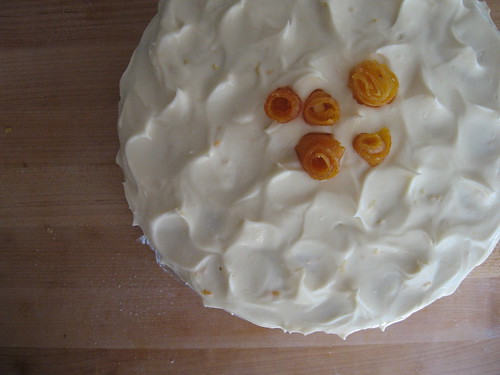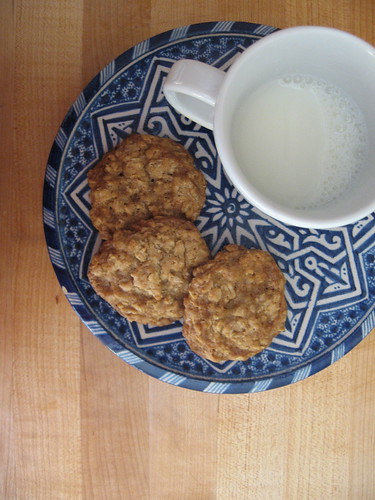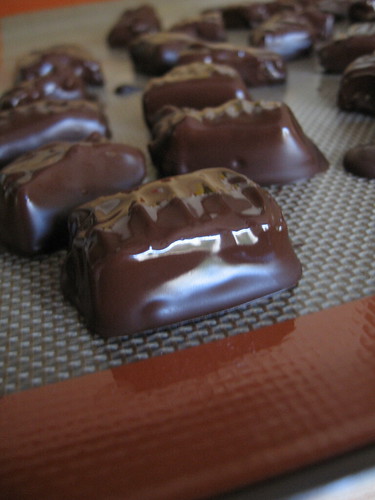My husband and I bonded over carrot cake before we even started dating. He has much less interest in food than I—eating 7000 calories a day to maintain weight for several years will do that to anyone, I suppose—but there are a few things that he genuinely loves, and carrot cake is one of them.

One Thursday, six-and-a-half years ago, we were sitting together at work craving cake. Not just any cake, but a moist carrot cake with pineapple, coconut, and a not-too-sweet cream cheese frosting.
Internet searches were made, plans were set, and
that Saturday we combined our efforts in the kitchen to cook our first dish together. Over the next week he brought big slices to work for us to share; I should have known right then that we were meant for one another.

I've tweaked the recipe over the years, adjusting amounts and scribbling them onto the smeared and stained pink index cards, and the end result is always delicious. The lightness of the buttermilk counteracts the proclivity of fruit & vegetables to make a heavy, bread-like cake, and the citrus-laced cream cheese frosting offers a tang that accentuates the flavors without overpowering them.
Oft-requested by friends and family, I have been known to bake the three layers but to only assemble a two layer cake, leaving the last just for us. Mike's favorite part is the thin slice cut from the top of the layer, smeared with frosting and rolled up like a taquito.
 There are some dishes that will always be ours
There are some dishes that will always be ours, no matter who cooks them: falafal, salsa, farfalle pasta with a chunky tomato-and-vegetable sauce ... and carrot cake.
Carrot Cake with Orange-Cream Cheese Frosting
Makes three nine-inch layers.
I shred about half of the carrots with the coarse grater and half with the fine; the finely shredded bits seem to dissolve into the cake, and the coarser pieces add a little texture and visual appeal. I've also been known to add chopped walnuts upon request, but I feel that
chunks of nuts don't belong in cookies and cakes, so I prefer it plain.
For the cake
3 cups unbleached, all-purpose flour
2 teaspoons baking soda
1 ½ teaspoons baking powder
1 tablespoon cassia (see note below)
1 ½ teaspoons cinnamon
¼ teaspoon nutmeg
¼ teaspoon cloves
¾ teaspoon salt
3 large eggs
2 ½ cups granulated sugar
1 cup canola oil
1 ½ cups buttermilk
1 tablespoon vanilla extract
¾ cup pineapple, drained, well chopped, and packed
3 cups shredded carrots, lightly packed
¾ cup dried, sweetened coconut, lightly packed
For the frosting
½ pound butter (two sticks)
1 pound cream cheese (preferably regular, although low-fat or Neufchâtel will work)
2 teaspoons vanilla extract
1 tablespoon freshly-squeezed orange juice
2 teaspoons orange zest
approximately 4 cups confectioners' sugar
Grease and flour three 9-inch cake pans; set aside. Preheat oven to 350ºF and place racks in the top and bottom thirds of the oven.
Whisk together the flour, leavening, spices and salt in a medium bowl; set aside. In a large mixing bowl, beat the eggs until light yellow. Add the sugar and beat until very pale and slightly fluffy, 2-4 minutes by hand. Add the oil, buttermilk and vanilla; mix well. Quickly beat in the flour mixture, then add the pineapple, carrots, and coconut. Mix well just until combined.
Divide evenly between the prepared cake pans and transfer to the oven, placing one pan on the lower rack and two on the top. Bake 50-60 minutes or until skewer comes out clean, switching from top to bottom after thirty minutes. Cool on racks 10-15 minutes, then remove from pans and cool completely.
For the frosting:
Have all ingredients at room temperature. Cream butter and cream cheese until quite fluffy. Add vanilla, juice, and zest; beat well to combine. Add the first three cups of frosting, sifting directly into the bowl and beating to combine. Add additional frosting if desired.
For best results while assembling cake, transfer the frosting to the refrigerator for 5-10 minutes before frosting. Otherwise, your frosting between the layers may be thin, and nobody wants that.
A note about cassia/cinnamon
What you usually buy at the store as "cinnamon" is actually
cassia, a similar spice from a related plant. It typically comes from Indonesia, China, or Vietnam (the best, in my opinion, is the "Saigon Cinnamon" from Vietnam), and it is quite spicy and perfect for savoury dishes.
"True" cinnamon, sometimes marketed as "Ceylon" cinnamon, has a more delicate, floral flavor, and it is the cinnamon flavor common in Mexican cooking and many cinnamon flavored candies. I prefer a mixture of the two in this recipe, but you can interchange them as you like.


























